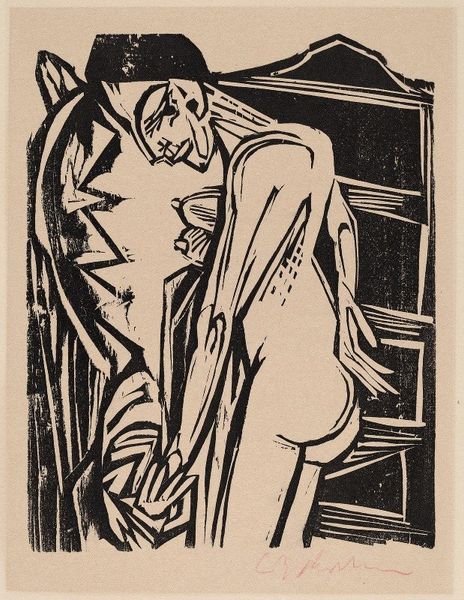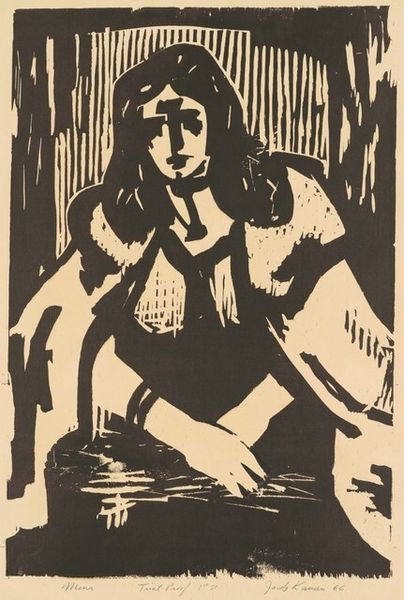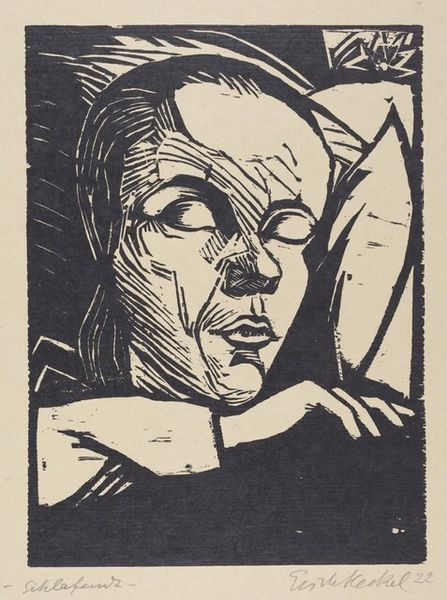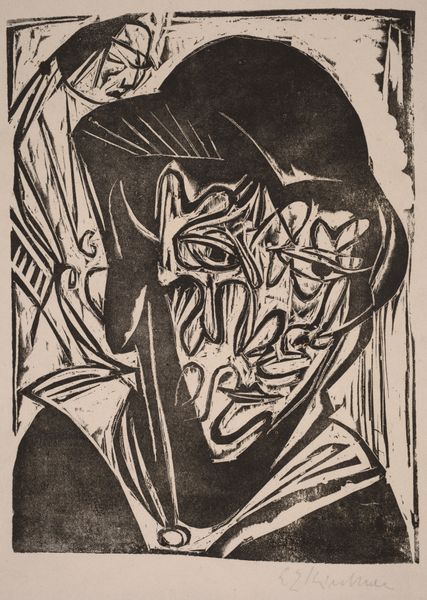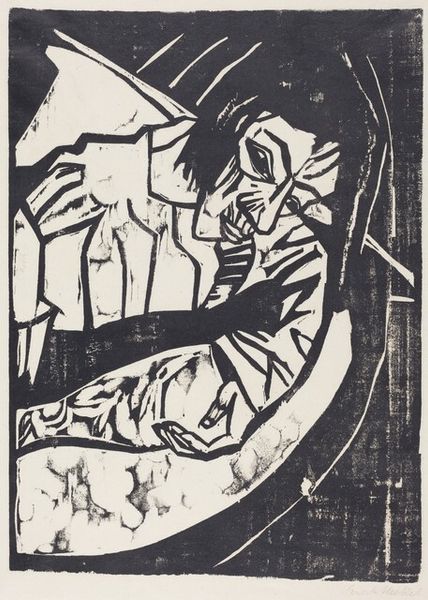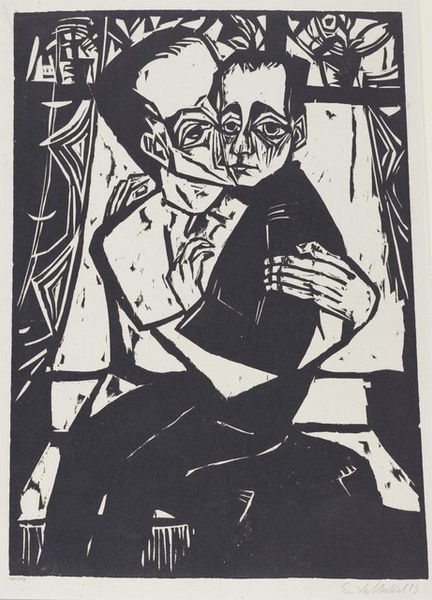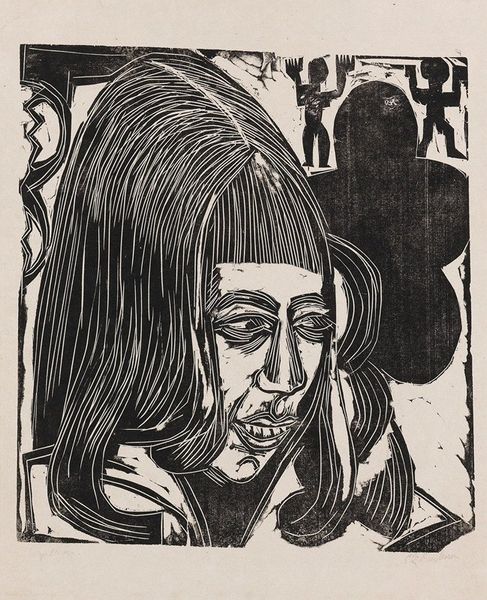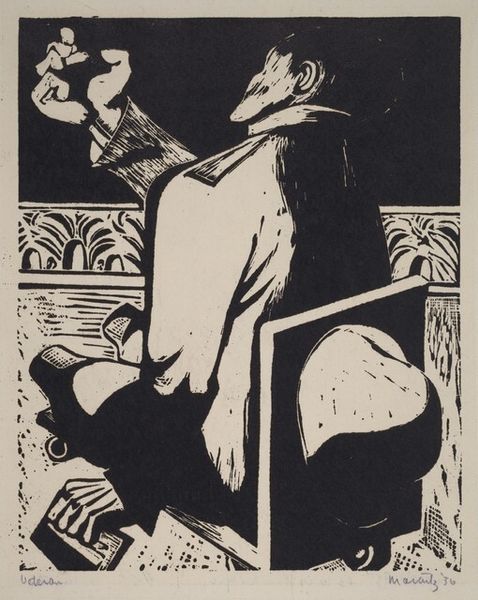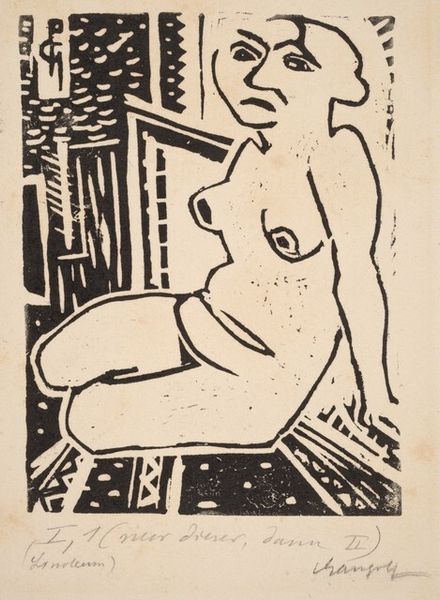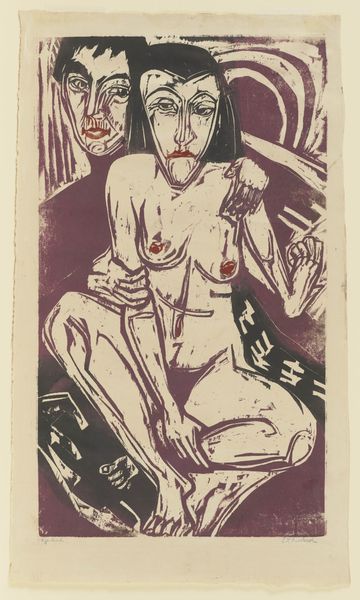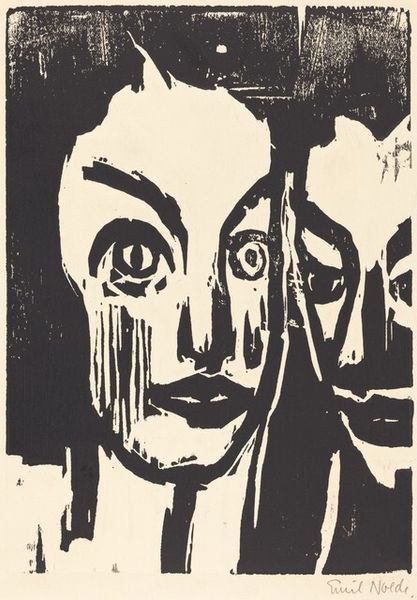
print, woodcut
# print
#
caricature
#
german-expressionism
#
figuration
#
expressionism
#
woodcut
#
nude
Dimensions: image: 41.8 × 30.9 cm (16 7/16 × 12 3/16 in.) sheet: 69.6 × 54.3 cm (27 3/8 × 21 3/8 in.)
Copyright: National Gallery of Art: CC0 1.0
Curator: Here we have Erich Heckel's woodcut, "Crouching Woman," created sometime between 1913 and 1921. What's your immediate take on it? Editor: Hmm, the stark black and white, the sharp angles... It feels like a scream trapped in a box. Like the woman herself is a raw nerve exposed. Is she cold? Or just completely alone with her thoughts? Curator: The image resonates deeply with the anxieties of its time. We have to situate this work within the context of early 20th century Germany, rife with social and political unrest. The distorted form of the woman, the use of woodcut which lends a sense of primal, brutal honesty, are hallmarks of German Expressionism. How do you see those conventions impacting the message? Editor: Well, the expressionistic style certainly heightens the emotion. Those jagged lines practically claw at you. I get the sense that Heckel wasn't interested in representing objective reality; rather, he’s offering an interior landscape, a subjective truth. The heavy outlines, like thick prison bars, convey deep distress. It feels almost confessional. Curator: Exactly! Heckel, alongside artists like Kirchner and Schmidt-Rottluff, was grappling with themes of alienation and the dehumanizing effects of industrialization. There's also a deliberate move away from traditional representations of the female nude. She is neither idealized nor overtly sexualized. We must consider the power dynamics that influence what kind of bodies and minds get to be celebrated, whose existence and emotions matter in social spheres, or even artistic portrayal. Editor: It's more like… she's vulnerable, exposed not in a sensual way, but stripped bare, mentally. Is that too cliché? It hits me on a visceral level. Like she’s mourning something immense. Maybe society itself, maybe herself, maybe both? The rigid hand and cubist sleeve make me believe this further: like she cannot escape an identity she's unwilling to shed. Curator: The composition guides our eyes directly to the downcast face, hands shielding and enclosing it as if attempting to contain some pain. It’s an unflinching gaze at the psychic wounds that are self-inflicted. Editor: So it leaves me pondering who gets to witness suffering, and what responsibility it holds? Heckel, in all of his distorted lines and emotional rawness, leaves me changed! Curator: It offers us an invitation, perhaps even an imperative, to sit with discomfort, to confront our collective history and ongoing present in these expressions.
Comments
No comments
Be the first to comment and join the conversation on the ultimate creative platform.
